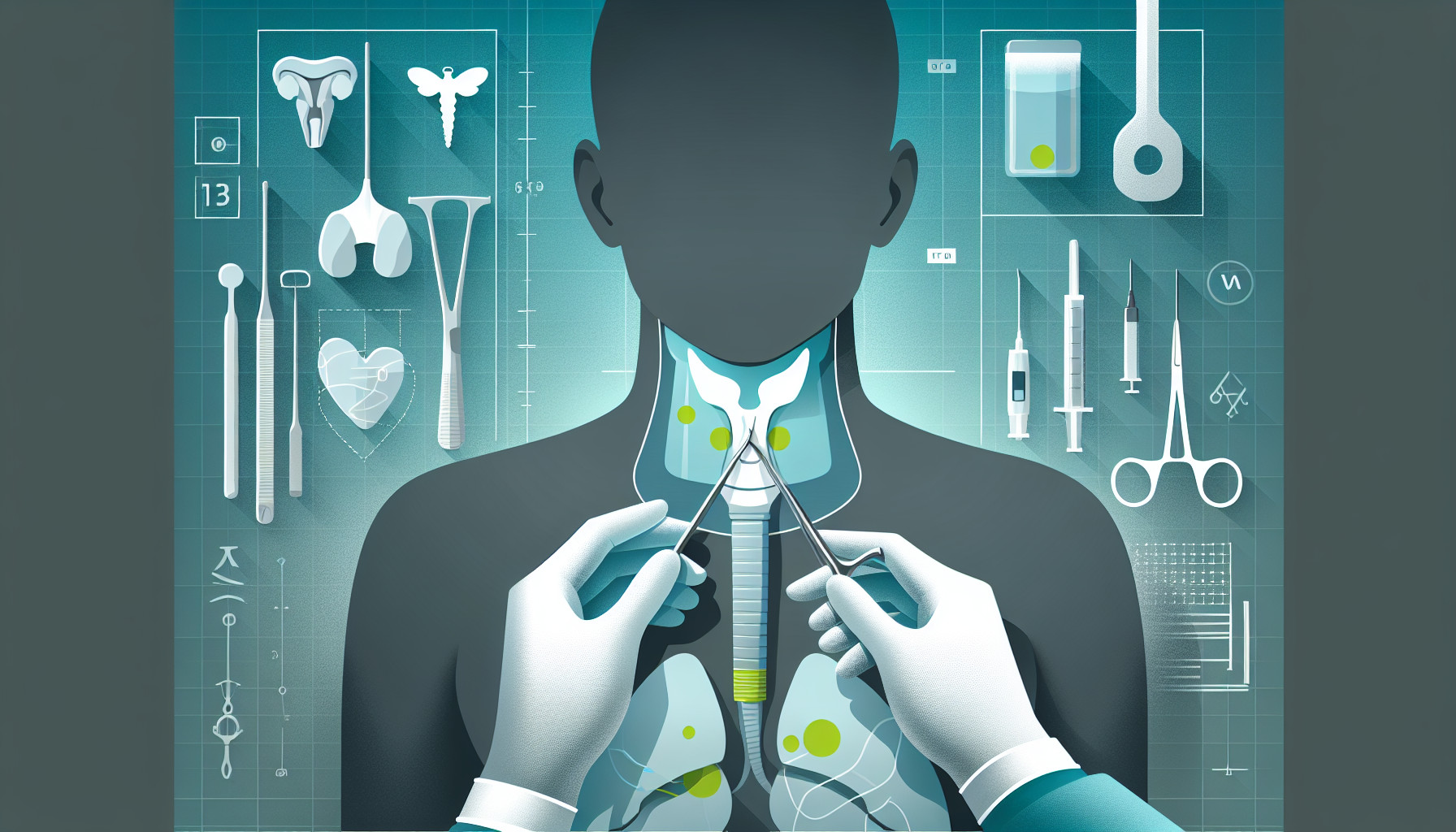Our Summary
This study looked at different treatments for injuries to the windpipe (tracheal injuries) that can occur during a specific type of surgery to remove the thyroid gland (total thyroidectomy). The researchers looked back at all the cases of this surgery performed at a specific hospital from 2006 to 2017, and found only one case where the windpipe was injured. They also searched for relevant studies on the topic, and included 15 of them in their analysis.
In total, they looked at data from 16 patients. The patients were about equally male and female, and their average age was around 42.
The study found that there aren’t many cases where this injury is treated in different ways. However, the researchers suggest that it would be helpful to have a standard way to treat it. They also emphasize that if a windpipe injury does occur during this surgery, it should be managed in a hospital that has a lot of experience with thyroid removal surgeries.
FAQs
- How common are windpipe injuries during total thyroidectomy surgeries?
- What was the average age of the patients who had tracheal injuries during thyroidectomy?
- What is the recommended way to manage windpipe injuries that occur during total thyroidectomy surgeries?
Doctor’s Tip
One helpful tip a doctor might tell a patient about thyroidectomy is to choose a surgeon who has a lot of experience with this specific surgery. This can help reduce the risk of complications, such as injuries to the windpipe, and ensure a successful outcome. It is also important to follow all pre- and post-operative instructions provided by your healthcare team to promote healing and recovery. If you have any concerns or questions about the surgery, don’t hesitate to discuss them with your doctor.
Suitable For
Patients who are recommended for thyroidectomy typically have conditions such as thyroid cancer, hyperthyroidism, large goiters, or thyroid nodules that are causing symptoms or are suspicious for malignancy. Additionally, patients who have recurrent thyroid nodules despite previous treatments or who have a family history of thyroid cancer may also be recommended for thyroidectomy.
Timeline
Before thyroidectomy:
- Patient undergoes initial consultation with an endocrinologist or surgeon to discuss the need for thyroidectomy.
- Pre-operative tests such as blood work, ultrasound, and biopsy may be conducted to determine the extent of thyroid disease.
- Patient may be prescribed medication to stabilize thyroid hormone levels prior to surgery.
- Patient receives pre-operative instructions on fasting, medications to avoid, and what to expect during and after surgery.
During thyroidectomy:
- Surgery is performed under general anesthesia by a surgeon specializing in thyroid surgery.
- Thyroid gland is removed, and nearby structures such as the parathyroid glands and recurrent laryngeal nerve are carefully preserved.
- In rare cases, injury to the windpipe (trachea) may occur during surgery.
After thyroidectomy:
- Patient is monitored in the recovery room for any immediate complications such as bleeding or difficulty breathing.
- Patient may experience temporary hoarseness or difficulty swallowing due to irritation of the vocal cords or surrounding tissues.
- Patient is prescribed thyroid hormone replacement therapy to maintain hormone levels in the absence of a thyroid gland.
- Follow-up appointments are scheduled to monitor hormone levels, adjust medication dosages, and assess for any long-term complications such as hypoparathyroidism or recurrent laryngeal nerve injury.
- Patient may undergo vocal cord evaluation if hoarseness persists beyond a few months post-surgery.
What to Ask Your Doctor
What are the potential risks and complications of thyroidectomy surgery, including the risk of injury to the windpipe?
How experienced are you in performing thyroidectomy surgeries and managing potential complications such as windpipe injuries?
What measures will be taken to minimize the risk of injury to the windpipe during the surgery?
How will a windpipe injury be diagnosed and treated if it occurs during the surgery?
What is the expected recovery process if a windpipe injury occurs during thyroidectomy surgery?
Are there any specific precautions or follow-up care that should be taken after thyroidectomy surgery to prevent or monitor for windpipe injury?
Can you provide information on the hospital’s track record in managing potential complications of thyroidectomy surgeries, including windpipe injuries?
Are there any alternative treatment options or approaches that could reduce the risk of windpipe injury during thyroidectomy surgery?
What signs or symptoms should I watch out for after the surgery that may indicate a windpipe injury has occurred?
Are there any specific factors in my case that may increase the risk of windpipe injury during thyroidectomy surgery, and how will you address them?
Reference
Authors: Tartaglia N, Iadarola R, Di Lascia A, Cianci P, Fersini A, Ambrosi A. Journal: World J Emerg Surg. 2018 Mar 23;13:15. doi: 10.1186/s13017-018-0175-4. eCollection 2018. PMID: 29588652
